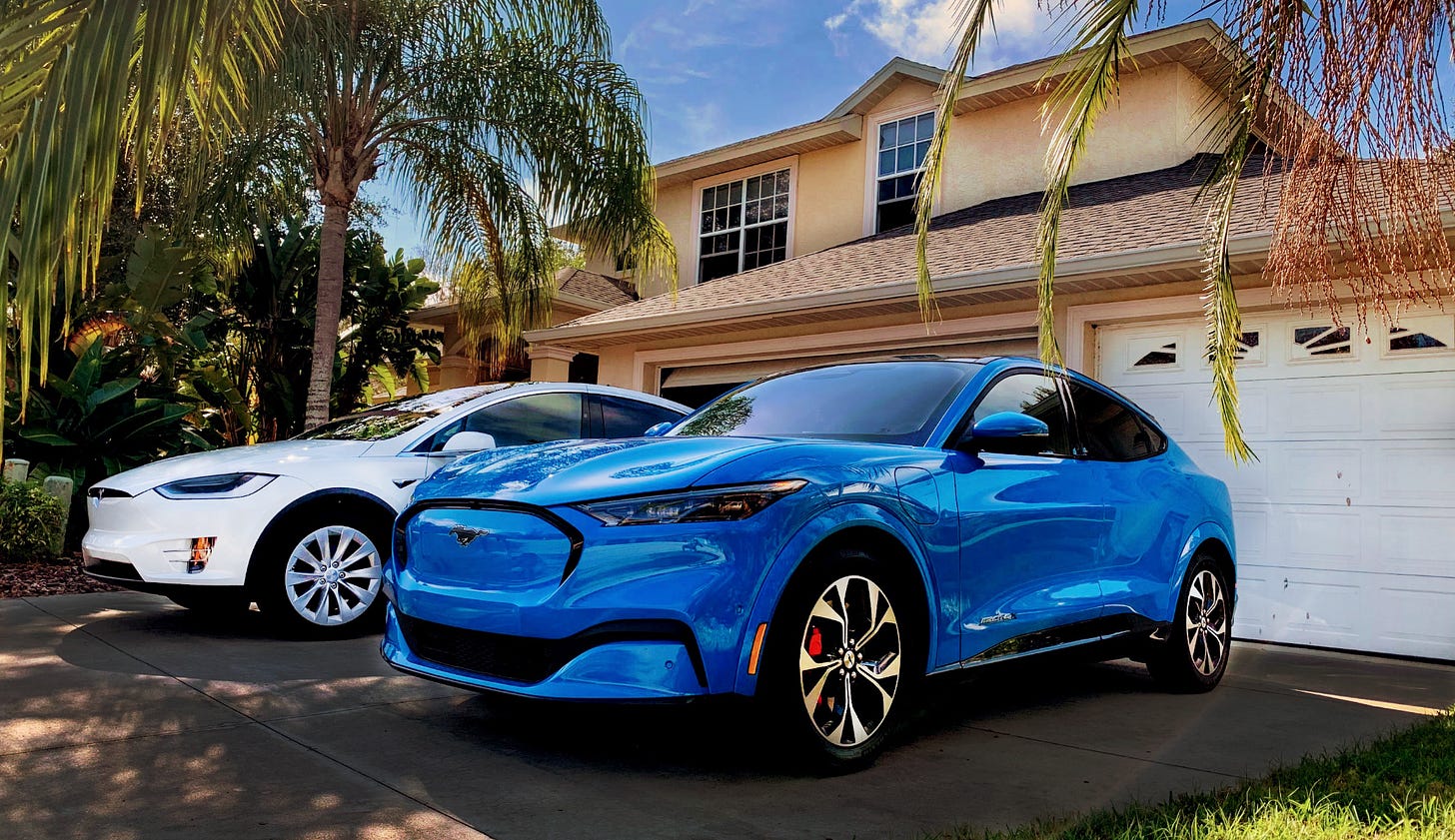Dual Charging at Home: can I have more than one EV charger?
A comprehensive guide examining the costs, charging speed considerations, infrastructure needs, and pros and cons of installing two electric vehicle chargers for home charging.
Electric vehicles (EVs) are revolutionising the way we drive, offering a cleaner and more sustainable mode of transportation. But what happens when you have more than one EV in your household? Can you have two electric vehicle chargers at home? The answer is yes, but it's not as simple as it might seem. This comprehensive guide will delve into the various aspects of dual charging at home, focusing on the cost, space, charging speed, driving habits, vehicle inlet types, and alternative charging options.
Cost Implications of Dual Charging
Installing two electric vehicle chargers at home is an investment. On average, the cost for a single charger and its installation is approximately £1,000. So, for two chargers, you're looking at over £2,000. While this might seem steep, there are ways to cushion the cost:
EV Chargepoint Grant: If you live in a flat or rented accommodation, you might be eligible for this grant, which can subsidise one of the chargers by £350.
Finance Options: Spreading payments with finance is available on many home electric vehicle chargers, offering flexibility in payment.
Space Considerations
The space available on your property plays a crucial role in the decision to install multiple chargers. If you have limited space, sticking to one electric vehicle charger might be the best option. However, if you have multiple garages or off-street parking, you might have room for two or more chargers. Assessing space and considering the aesthetics of your house is vital before making a decision.
Charging Speed
Charging speed is one of the most critical factors to consider when thinking about dual charging. Here's a detailed look at how the time it takes to charge can be affected:
Single-Phase vs Three-Phase Electricity Supply: Most UK households have a single-phase electricity supply. If you have two 7kW home EV chargers on one circuit with a single-phase supply, you'll be charging at approximately 3kW to 3.6kW each, rather than both at the typical 7kW. Upgrading to a three-phase electricity supply can solve this issue, but it's an expensive and time-consuming process.
Load Balancing Feature: Investing in home EV chargers with a load-balancing feature can ensure equal charging. The Easee One, for example, allows you to 'daisy chain' up to three electric vehicle chargers on your property per dedicated circuit. However, with a single-phase electricity supply, charging both EVs simultaneously will still result in a reduced charging speed of around 3kW each.
Dual Chargers: Dual chargers are one charging unit with two connectors. This might be a slightly cheaper option but it will still face the issue of decreased charging speed if both connectors have to share the supply from one circuit.
Understanding your charging needs, the type of electricity supply you have, and the features of the chargers you choose can help you make an informed decision about dual charging at home.
How Often Do You Drive Your Electric Car?
Your daily commute, the frequency of long journeys, and the typical range of your EV all play a role in determining whether two chargers are necessary. If every EV driver in your household has a long daily commute and a smaller battery, requiring frequent charging, two chargers might be beneficial. Conversely, if commutes are short or infrequent, one charger might suffice. It’s kind to share!
Vehicle Inlet Types: Compatibility Matters
The type of inlet your electric vehicle has can also influence the decision to install two separate chargers. Here's why:
Different Inlet Types: If one vehicle in your household has a Type 1 inlet and the other a Type 2, they might not be able to share a charger, necessitating two separate chargers.
Universal Chargers: Some chargers are designed to be compatible with both Type 1 and Type 2 inlets, offering flexibility if your household has different types of EVs.
Adapters: Using adapters to fit different inlets can be an option, but it might not be as convenient as having two separate chargers.
Understanding the compatibility of chargers with your vehicles' inlets is essential to ensure efficient and convenient charging.
Alternative Charging Options
If you decide to opt for a single home charger, there are other ways to charge your electric vehicle, such as:
Public Charging Infrastructure: Utilising public charging stations can be a practical solution, especially if there are convenient locations near your workplace or regular destinations.
Slower Three-Pin Plug Charging: While not ideal for daily charging, a three-pin plug can be used as a backup or occasional charging solution as long as total load on the outlet is limited to less than 2kW.
Exploring alternative charging options can provide flexibility and reduce the need for multiple home chargers.
Conclusion: Weighing the Pros and Cons of Dual Home Charging
Deciding whether to install one or two electric vehicle chargers for your home requires carefully weighing several factors. While dual charging is possible, it may not be the best solution for every situation.
Having two chargers can provide convenience and maximize charging speed, especially for households with multiple EVs, busy driving schedules, and available space. However, the costs are doubled, and charging speed can still be impacted by electricity supply and load-balancing capabilities.
In some cases, a single charger coupled with public charging or occasional three-pin plug charging may suffice. This comes down to thoroughly assessing usage needs and patterns.
The growth of EVs will continue to make dual home charging considerations more common. By understanding the costs, evaluating your needs, and exploring alternatives, EV owners can make the optimal charging decision for their households.
While two chargers may seem ideal, take the time to weigh the pros and cons outlined in this guide before moving ahead with a dual home charging investment.
The Future of Transport: Electric Vehicles and Renewable Energy
EVs offer a cleaner, more sustainable alternative to traditional petrol and diesel vehicles, helping to reduce our carbon footprint and combat climate change. But what exactly are electric vehicles, and how do they fit into our renewable energy future? This article aims to answer these questions and more, providing a comprehensive overview of the role o…
Examining the Impressive Durability of High-Mileage Teslas in the UK
The rise of electric vehicles (EVs) has brought about a paradigm shift in the automotive industry. Among the leading brands in this revolution, Tesla stands out with its impressive range of high-performance electric cars. One of the key aspects that set Tesla apart is the impressive durability of its vehicles, even those with high mileage. This article …









